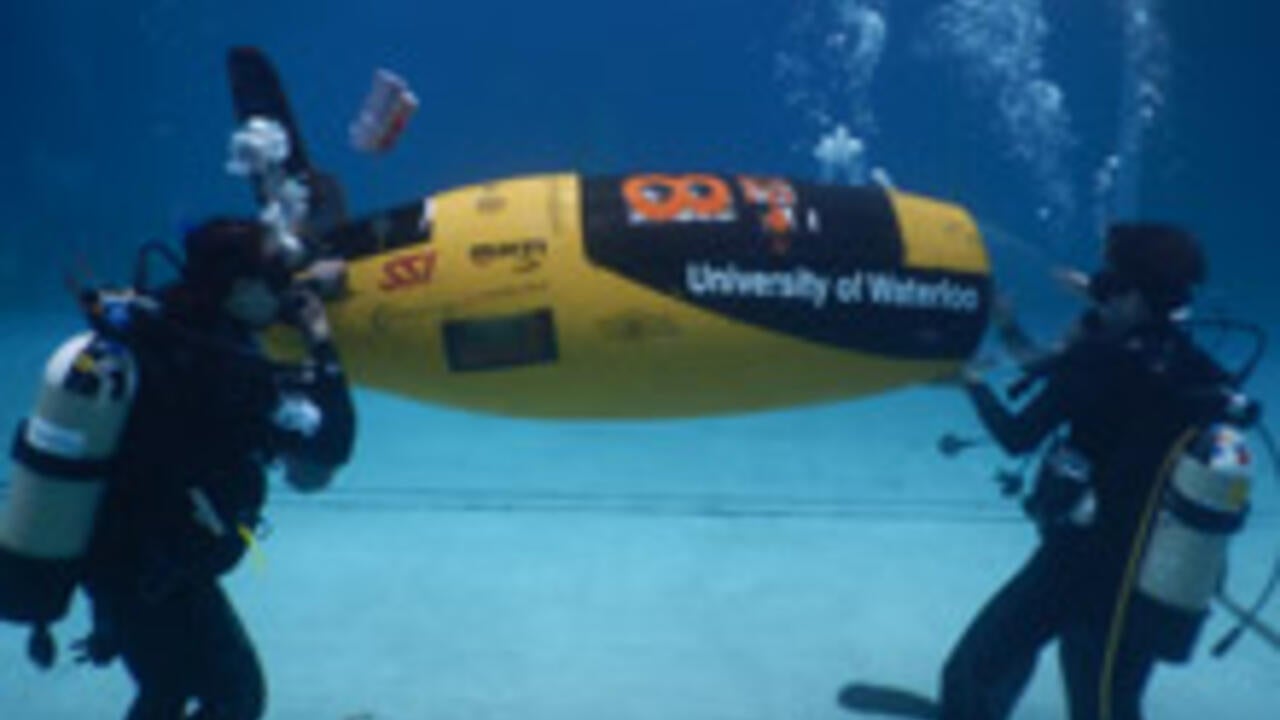
WatSub: When everything that could fall apart ... does fall apart
They crashed before getting to the timing gates, but the WatSub team never gave up and earned a perseverance prize at the European International Submarine Race in England

They crashed before getting to the timing gates, but the WatSub team never gave up and earned a perseverance prize at the European International Submarine Race in England
By Brian Caldwell Faculty of EngineeringThey lost the race, but not their sense of humour – or their determination to make a much better showing the next time they launch their pedal-powered submarine in a maritime testing facility.
After a comedy of technical and logistical errors contributed to a dead-last finish at a competition in England last week, student members of a University of Waterloo design team are chalking it all up to experience.
Lesson one? How about the importance of improvisation when things aren’t, well, going exactly as planned.
That’s what it came down to for members of WatSub, as the team is called, when their underwater vessel was first held up in customs, then arrived late and in rough shape after the competition involving 10 other teams from Europe, North America and New Zealand had already started.
“Every single thing that could fall apart did and we fixed them all with zip ties,” said Ojaswi Tagore, a third-year mechanical engineering student and founding member of the team.
Never mind that their craft, nicknamed Amy, didn’t record an official speed because Tagore, the driver, kept hitting his knees on the cramped hull while pedalling and crashed before reaching the timing gates.
After taking on the challenge of designing and building a small submarine just over a year ago, the students – about 15 in all, with a core group of five - consider it a success just to have qualified for the third biennial European International Submarine Race in Gosport, UK.
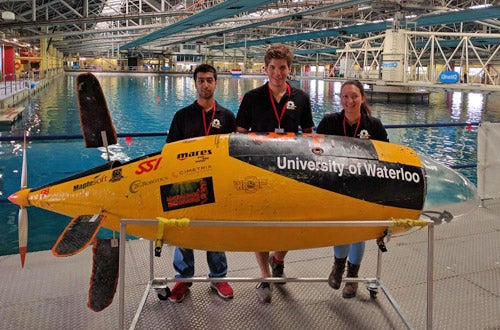
Ojaswi Tagore, Gonzalo Espinoza and Janna Henzi represented WatSub at the European International Submarine Race in Gosport, UK
Getting there meant learning to scuba dive, lining up corporate sponsors and finding out the hard way that “everything is simple until you go underwater,” a saying the team adopted as its motto. Among the many obstacles to overcome: rust.
Competing against university teams with a decade or more of experience, WatSub’s three representatives in England – Tagore and fellow engineering students Gonzalo Espinoza and Janna Henzi – even came home with a prize for perseverance.
“I think the greatest thing we learned is never to give up,” said Ana Krstanovic, a third-year political science student who does communications for the first-ever Waterloo entry. “We’re more motivated now than ever.”
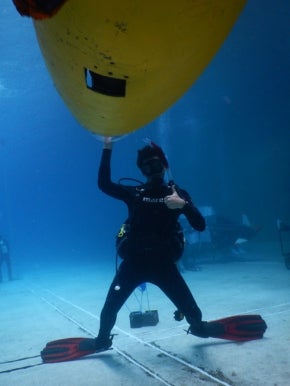 With almost a year to go back to the drawing board to prepare for their next competition, the 2017 International Submarine Race in Maryland, the team hopes to apply lessons from England and attract new students to the effort.
With almost a year to go back to the drawing board to prepare for their next competition, the 2017 International Submarine Race in Maryland, the team hopes to apply lessons from England and attract new students to the effort.
The project draws on disciplines ranging from electrical engineering to mechatronics, includes support roles for non-engineers like Krstanovic and is based at Waterloo Engineering’s Sedra Student Design Centre.
“The good news is we learned a lot,” said Tagore, noting that seven other teams failed to even qualify for the competititon. “It was really good just to race, just to make it there – and it did work.”
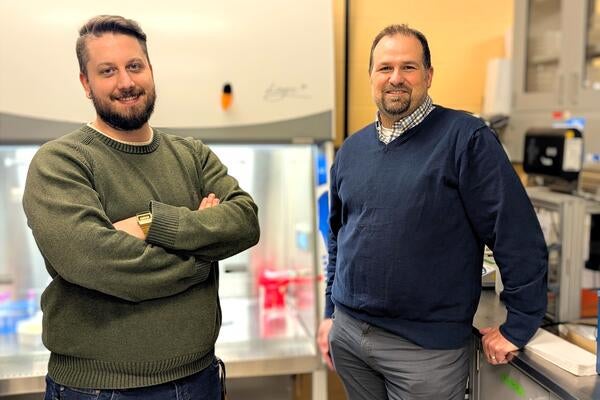
Read more
Engineering researchers team up to tackle the plastics pollution problem with microbial innovation and engineering design

Read more
15 University of Waterloo researchers have been named to the annual Highly Cited Researchers™ list for significant contributions to their specific fields of research
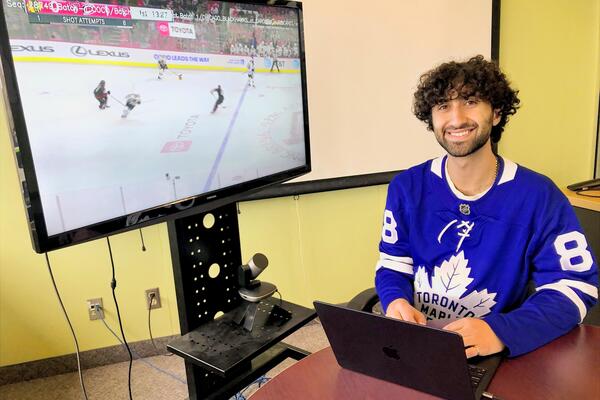
University of Waterloo Engineering master's student Liam Salass developed an AI-based system that improved puck detection when analyzing game video. (University of Waterloo)
Read more
University of Waterloo researchers make big strides in hockey analysis using game video
Read
Engineering stories
Visit
Waterloo Engineering home
Contact
Waterloo Engineering
The University of Waterloo acknowledges that much of our work takes place on the traditional territory of the Neutral, Anishinaabeg, and Haudenosaunee peoples. Our main campus is situated on the Haldimand Tract, the land granted to the Six Nations that includes six miles on each side of the Grand River. Our active work toward reconciliation takes place across our campuses through research, learning, teaching, and community building, and is co-ordinated within the Office of Indigenous Relations.